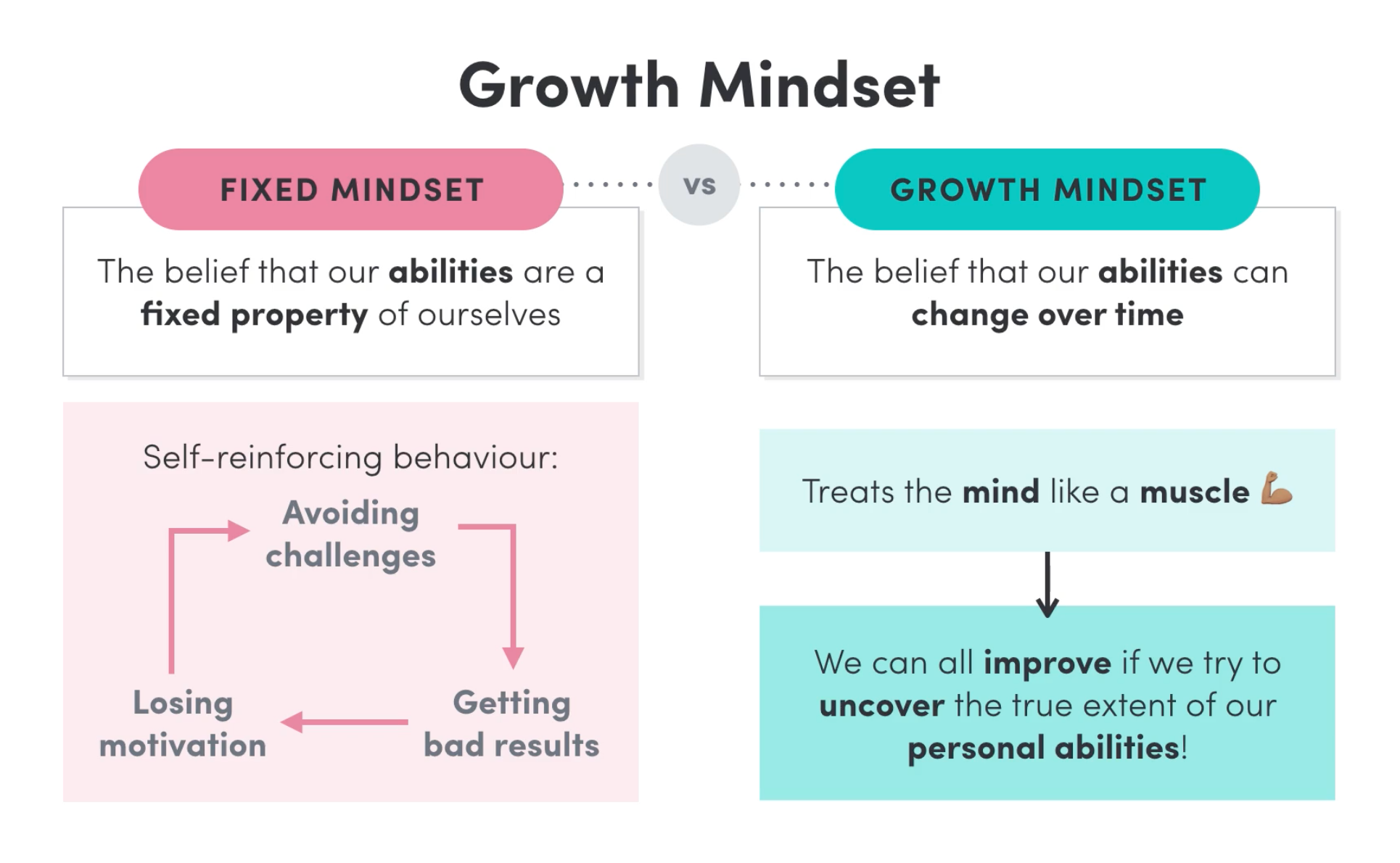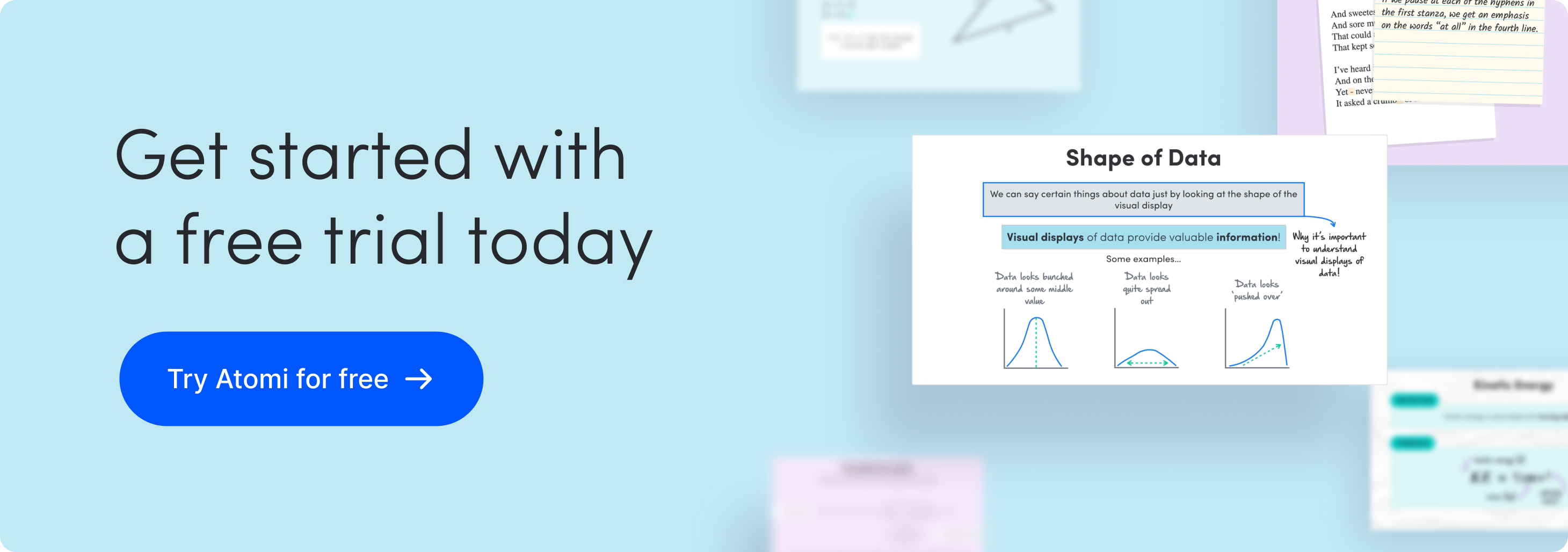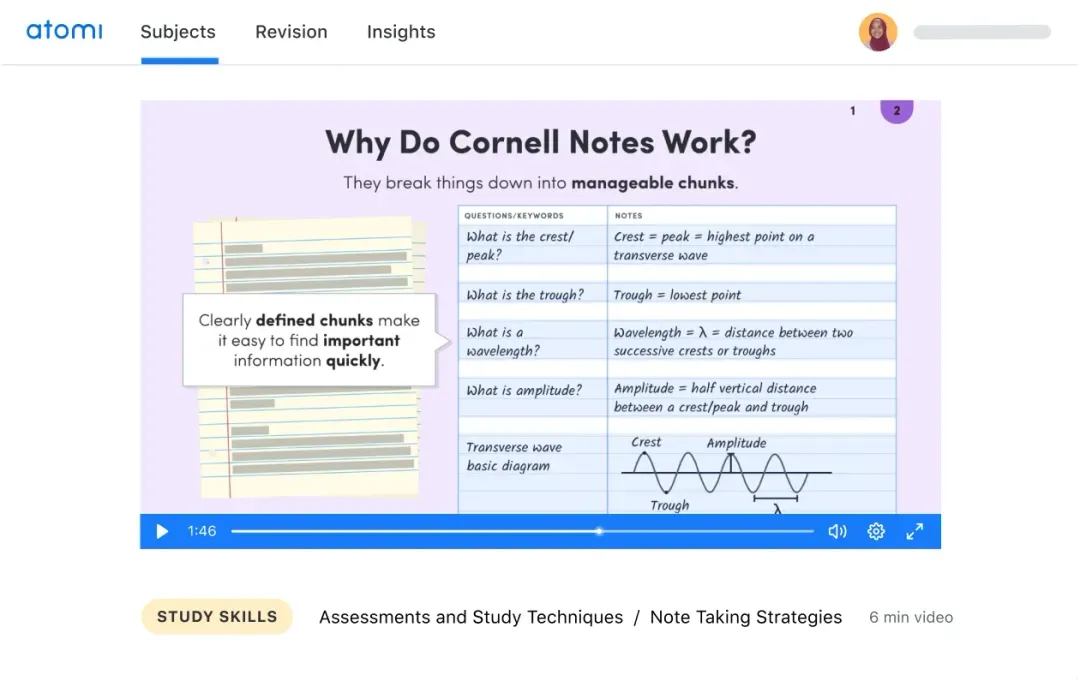How to foster a growth mindset in high school students

Learning isn’t always a linear journey. While some students might grasp concepts from day one, others might find new skills or topics more challenging to master.
As an educator, your role is to help students navigate these roadblocks and setbacks with a sense of optimism and resilience. By fostering a growth mindset among your students, you can help to turn students’ self-talk from “I can’t do this” to “I can’t do this yet”—boosting student engagement, motivation and confidence along the way.
Every interaction you have with students is an opportunity to reinforce growth mindset strategies. By modelling a growth mindset and explicitly teaching these strategies in your classroom, learners can understand both why and when to use them.
In this guide, we cover:
- What is a growth mindset?
- Why a growth mindset boosts student motivation
- 3 practical tips to cultivate a growth mindset in classrooms
- Tip 1: Introduce growth mindset strategies early
- Tip 2: Model growth mindset strategies both inside and outside the classroom
- Tip 3: Encourage discussion and collaboration between students
- How Atomi supports learners to foster a growth mindset
What is a growth mindset?
A growth mindset is the belief that challenges and roadblocks are opportunities for growth, and that dedication and hard work can help to improve one’s talents, intelligence and capabilities. The theory was first developed by Carol Dweck (now a world-renowned psychologist at Stanford University) in her book, “Mindset: The New Psychology of Success”, in 2006.
All students have the ability to learn new skills and overcome challenges. The key is helping learners build that self-confidence and a positive attitude towards learning.
Educators play a powerful role in fostering a growth mindset among students. If learners believe that they can train their brains to achieve more, they’ll be more willing to push through tough topics and stay engaged with complex material.
In the classroom, practical growth mindset strategies include:
- Normalising mistakes and reframing failures as learning opportunities
- Praising students for effort and engaging with their learning, rather than for their inherent intelligence
- Teaching learners that feedback is helpful and a crucial part of the learning process
- Clearly communicating that skills and abilities can be improved over time
In short, a growth mindset builds resilience, self-belief, and inspires creative problem-solving.
In contrast, a fixed mindset means students believe their intelligence and ability are fixed and unchangeable—leading to negative self-talk, feelings and behaviour towards topics they find challenging.
Research on academic tenacity has found that students with a growth mindset exhibit continuous improvement in their academic results, whereas students with a fixed mindset do not.

Why a growth mindset boosts student motivation
Research by Dweck suggests that adopting a growth mindset enables students to outperform and achieve a higher level of success than learners with a fixed mindset.
With a growth mindset, students are better able to:
- Overcome learning challenges and push through when tasks or material feel daunting.
- Recognise the need for hard work and put in the time and effort to revise, rather than rely on their innate abilities.
- See mistakes as growth opportunities, allowing learners to engage with constructive feedback and not let setbacks deter them from trying again.
3 Practical tips to cultivate a growth mindset in classrooms
Ready to boost resilience and deepen engagement? Encouraging students to adopt a growth mindset is a proven way to enhance academic performance and help them engage meaningfully with their learning.
We chatted with Sarah-Eleni Zaferis, Teacher and School Enablement Leader at Atomi, to unpack three practical steps you can take to bring growth mindset strategies into your classroom.
Tip 1: Introduce growth mindset strategies early
The sooner you start bringing the principles of a growth mindset into your classroom, the more likely students will be to adopt them.
Give students time to understand what a growth mindset is, why it matters and how it can benefit them. Try using growth-focused phrases in your teaching, such as:
- “Effort isn’t an obstacle, but the pathway to understanding and mastery”
- “Difficulties are opportunities to learn something new”
- “Feedback is part of the learning process, not a personal attack”
Consider how you discuss skill sets in your classroom and always look for opportunities to focus on growth and development. That could be using reminders like, “There’s no such thing as a ‘maths person’” or “Being a ‘fast reader’ is a skill we can all develop”.
It's important to understand that fostering a growth mindset cannot happen all at once. Instead, introducing strategies early and slowly will help students adopt a growth mindset in their everyday lives.
—Sarah-Eleni Zaferis, Teacher and School Enablement Leader at Atomi
Additionally, Sarah recommends applying these strategies to situations relevant to students and the learning context they’re currently navigating. “For example, you wouldn't be talking about high-stakes assessments with Year 7 students but rather tapping into situations that a Year 7 student would encounter often,” explains Sarah.
Tip 2: Model growth mindset strategies both inside and outside the classroom
A growth mindset isn’t just helpful for learning and academic achievement. It can help students build resilience in all aspects of their lives.
Look for opportunities to model and demonstrate growth mindset strategies outside the classroom as well. That could look like sharing the skills you’re still working on during school sports sessions, and what you’re doing to improve your shooting skills in basketball, for example.
Model growth mindset strategies both inside and outside the classroom so that students can understand that this isn't just something for kids but rather something that creates positive outlooks in all situations, and at all stages of life

Tip 3: Encourage discussion and collaboration between students
Peer-to-peer learning is another handy way to encourage students to adopt a growth mindset.
By encouraging learners to chat with each other about how they’re working through challenges or roadblocks, students can gain new ideas and ways of thinking about their learning.
Students are more likely to adopt something if they see a peer implementing it first, because it makes it seem more accessible and realistic.
Research reveals that peer influence can be positive, providing students with the encouragement to try new things and become more actively engaged in their learning. Encourage learners to reflect on their learning and put growth mindset strategies into action.
How Atomi supports learners to foster a growth mindset
At Atomi, we’re passionate about creating engaging and impactful curriculum content, fit for all types of learners.
The entire platform is designed to help students take ownership of their learning journey, with the ability to receive personalised feedback and smart revision recommendations (powered by Atomi’s AI) based on their strengths and knowledge gaps.
From catching up on course material to prepping for exams, students are encouraged to keep tabs on their progress and take intentional action to hit their academic goals.
But we don’t stop at course material. Our learning platform also delivers a Study Skills course, here to help students build solid revision habits that foster a love of learning. From goal setting to study techniques and even well-being resources, this module is the perfect way to help learners feel more confident and engaged with their learning.

Want to leverage the Study Skills module in your classroom? Start a free trial of Atomi and help your students foster a growth mindset.
References
Subscribe to our newsletter
Get the latest teaching and learning insights delivered to your inbox.
You can unsubscribe at any time, no hard feelings.
Subscribe to our newsletter
Get the latest teaching and learning insights delivered to your inbox.
You can unsubscribe at any time, no hard feelings.
What's Atomi?
Easy to understand, super engaging, and matching what you’re learning in class. Available for 100s of subjects across your high school years.
With heaps of questions and smart AI feedback that shows you what you’ve nailed and what to work on—so you won’t just feel ready, you’ll be ready.
Improve your study game, get AI-driven tips tailored to you, keep tabs on your progress and unlock insights so you can always hit your goals.
What's Atomi?
Captivating and impactful video-first content, fit for all types of learners and grounded in the absolute must-have info of the high school curriculum.
Active recall quizzes, topic tests and exam practice enable students to get immediate feedback and build skills, while allowing teachers to differentiate instruction.
Create engaging learning experiences with easy-to-use tasks, get actionable insights to differentiate instruction and experience intelligent personalisation for your students.
What's Atomi?
Short, curriculum-specific videos and interactive content that’s easy to understand and backed by the latest research.
Active recall quizzes and practice sessions enable students to build their skills, put knowledge into practice and get feedback.
Our AI understands each student's progress and makes intelligent recommendations based on their strengths and weaknesses.




